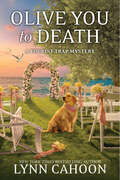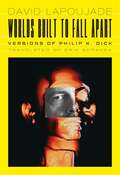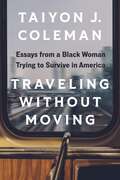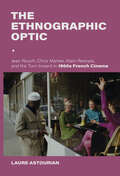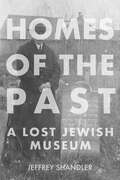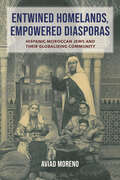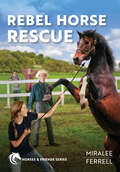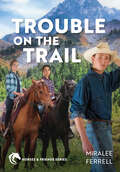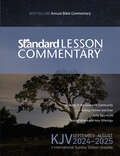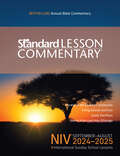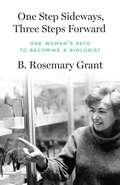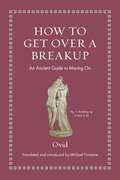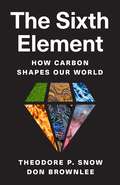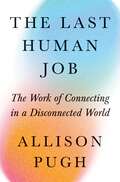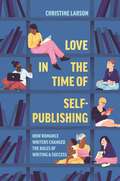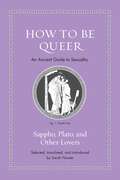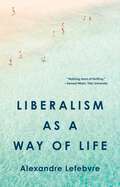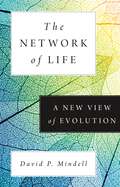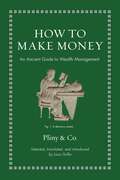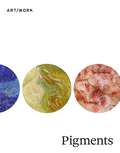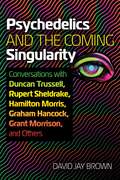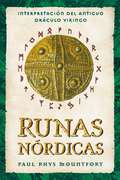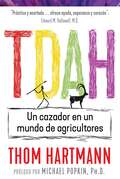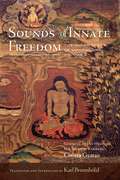- Table View
- List View
Olive You to Death (A Tourist Trap Mystery #16)
by Lynn CahoonIn the coastal town of South Cove, June is tourist season—and wedding season. Unfortunately, Jill Gardner&’s own wedding has been delayed. But that just gives her more time to search for a missing bride—and a killer . . . Things are looking up for the owner of Coffee, Books, and More—Jill&’s finally getting her MBA, and though her wedding to police detective Greg is postponed a few months, she still has plenty to celebrate. A girls&’ weekend in Santa Barbara is just the ticket. But back in South Cove, someone else&’s big day has become a big problem. Antiques dealer Josh Thomas and Mandy Jensen were planning a small private ceremony under an olive tree on the historic Jensen farm—until Mandy went missing . . . Is this a case of a runaway bride—or a guilty groom? Greg zeroes in on Josh but finds him so annoying that he quietly asks Jill&’s help in keeping his number-one suspect distracted. She knows that Josh is searching for something else besides his fiancée—a bank robber&’s buried gold bullion. And when the professor he&’d been discussing it with turns up dead, she can&’t help wondering if what looked like cold feet was actually cold-blooded murder . . .
Worlds Built to Fall Apart: Versions of Philip K. Dick (Univocal)
by David LapoujadePhilosophically analyzing the work of one of the twentieth century&’s most popular, and peculiar, science fiction authors Despite his enduring popularity, Philip K. Dick (1928–1982)—whose short stories and novels were adapted into or influenced many major films and television shows, including Blade Runner, Total Recall, The Truman Show, and The Man in the High Castle—has long been a marginal figure in American literature, even in the science fiction genre he helped revolutionize. Here, an influential French philosopher offers a major new perspective on an author who was known as much for his eccentricities and excesses as for his writing. For David Lapoujade, it is precisely the many ways in which Dick&’s works seem to hover on the brink of losing all touch with reality that make him such a singular figure, both as a sci-fi author and as a thinker of contemporary life. In Worlds Built to Fall Apart, Lapoujade defines sci-fi as a way of thinking through the creation of worlds and argues that Dick does so by creating worlds that fall rapidly to pieces. Whatever his mechanism to bring this about (drugs or madness, alien satellite transmissions or encroaching parallel universes), the effect is always to reveal reality to be a construction, in which certain people determine what appears as real to the rest of us. Orienting Dick within philosophy and drawing connections to a wide variety of other thinkers and artists, this remarkable reading shows how he proposes unstable, fluctuating futures in which tinkering with reality has become the best means of resisting total control. Engaging with most of Philip K. Dick&’s published works, as well as with several of his essays and his notorious psychic autobiography The Exegesis, Lapoujade hones in on the &“war of the psyches&” that underlies Dick&’s critique of reality. He puts Dick&’s work in conversation with a vast array of subjects—from cybernetics to schizoanalysis, and from Pop art to David Lynch, J. G. Ballard, and William S. Burroughs—revealing Dick&’s oeuvre to comprise a profound reality defined by artifice, precarity, and control. Retail e-book files for this title are screen-reader friendly.
Traveling without Moving: Essays from a Black Woman Trying to Survive in America
by Taiyon J. ColemanA stunning lyrical commentary on the constructions of race, gender, and class in the fraught nexus of a Black woman&’s personal experience and cultural history The Fair Housing Act passed in 1968, and more than fifty years later, yours seems to be the only Black family on your block in Minneapolis. You and your Black African husband, both college graduates, make less money than some White people with a felony record and no high school diploma. You&’re the only Black student in your graduate program. You just aren&’t working hard enough. You&’re too sensitive. Sandra Bland? George Floyd? Don't take everything so personally. Amid the White smiles of Minnesota Nice and the Minnesota Paradox—the insidious racism of an ostensibly inclusive place to live—what do you do? If you&’re Taiyon J. Coleman, you write. In Traveling without Moving, Coleman shares intimate essays from her life: her childhood in Chicago—growing up in poverty with four siblings and a single mother—and the empowering decision to leave her first marriage. She writes about being the only Black student in a prestigious and predominantly White creative writing program, about institutional racism and implicit bias in writing instruction, about the violent legacies of racism in the U.S. housing market, about the maternal health disparities seen across the country and their implication in her own miscarriage. She explores what it means to write her story and that of her family—an act at once a responsibility and a privilege—bringing forth the inherent contradictions between American ideals and Black reality. Using a powerful blend of perspectives that move between a first-person lens of lived experience and a wider-ranging critique of U.S. culture, policy, and academia, Coleman&’s writing evinces how a Black woman in America is always on the run, always Harriet Tubman, traveling with her babies in tow, seeking safety, desperate to survive, thrive, and finally find freedom. Retail e-book files for this title are screen-reader friendly.
Empire Builders: An Illustrated History of the Rise and Fall of Cleveland's Van Sweringen Brothers
by Lauren R. PaciniEmpire Builders tells the story of Oris P. and Mantis J. Sweringen, two brothers from Wooster, Ohio, in the late nineteenth and early twentieth centuries. Although they were born into abject poverty, Oris was an extraordinary visionary who, with the help of his devoted younger brother, amassed a vast fortune in real estate and railroad developments. Their major breakthrough came in 1913 with the establishment of Shaker Heights, an affluent garden suburb connected by a brand-new interurban railroad to the booming midwestern metropolis of Cleveland. The Van Sweringens' ascension after Shaker Heights was meteoric, and it culminated with the construction of the 52-story Terminal Tower in downtown Cleveland in 1927. However, the country's economy came crashing down after the 1929 stock market collapse, and their empire crumbled around them. Empire Builders is the first new biography of the Van Sweringen brothers in more than twenty years. In it, architectural photographer and local history author Lauren R. Pacini tells the remarkable story of the Van Sweringen brothers through words and images. This richly illustrated volume features more than 150 new photographs of the still-fabulous historic homes the brothers built throughout greater Cleveland.The foreword is written by John J. Grabowski.
The Ethnographic Optic: Jean Rouch, Chris Marker, Alain Resnais, and the Turn Inward in 1960s French Cinema (New Directions in National Cinemas)
by Laure AstourianThe Ethnographic Optic traces the surprising role of ethnography in French cinema in the 1960s and examines its place in several New Wave fictions and cinéma vérité documentaries during the final years of the French colonial empire. Focusing on prominent French filmmakers Jean Rouch, Chris Marker, and Alain Resnais, author Laure Astourian elucidates their striking pivot from centering their work on distant lands to scrutinizing their own French urban culture. As awareness of the ramifications of the shrinking empire grew within metropolitan France, these filmmakers turned inward what their similarly white, urban, bourgeois predecessors had long turned outward toward the colonies: the ethnographic gaze.Featuring some of the most canonical and best-loved films of the French tradition, such as Moi, un Noir, La jetée, and Muriel, this is an essential book for readers interested in national identity and cinema.
Homes of the Past: A Lost Jewish Museum (The Modern Jewish Experience)
by Jeffrey ShandlerHomes of the Past tells the powerful story of how immigrant Jewish scholars in 1940s New York sought to build a museum to commemorate their lost worlds and people. Among the Jews who arrived in the United States in the early 1940s were a small number of Polish scholars who had devoted their professional lives to the study of Europe's Yiddish-speaking Jews at the YIVO Institute for Jewish Research. Faced with the devastating knowledge that returning to their former homes and resuming their scholarly work there was no longer viable, they sought to address their profound sense of loss by continuing their work, under radically different circumstances, to document the European Jewish lives, places, and ways of living that were being destroyed. In pursuing this daunting agenda, they made a remarkable decision: they would create a museum to memorialize East European Jewry and educate American Jews about this legacy. YIVO scholars determinedly pursued this undertaking for several years, publicizing the initiative and collecting materials to exhibit. However, the Museum of the Homes of the Past was abandoned shortly after the war ended.With insight and clarity, Jeffrey Shandler draws upon the surviving archival sources to tell the story of the purpose, development, and ultimate fate of the Museum of the Homes of the Past.Homes of the Past explores this largely unknown episode of modern Jewish history and museum history and demonstrates that the project, even though it was never realized, marked a critical inflection point in the dynamic interrelations between Jews in America and Eastern Europe.
Entwined Homelands, Empowered Diasporas: Hispanic Moroccan Jews and Their Globalizing Community (Sephardi and Mizrahi Studies)
by Aviad MorenoEntwined Homelands, Empowered Diasporas explores how the 30,000 Jews in northern Morocco developed a sense of kinship with modern Spain, medieval Sepharad, and the broader Hispanophone world that was unlike anything experienced elsewhere. The Hispanic Moroccan Jewish diaspora, as this group is often called by its scholars and its community leaders, also became one of the most mobile and globally dispersed North African groups in the twentieth century, with major hubs in Venezuela, Argentina, Brazil, Peru, Spain, Israel, Canada, France, and the US, among others.Drawing on an array of communal sources from across this diaspora, Aviad Moreno explores how narratives of ancestry in Spain, Israel, Morocco, and several Latin American countries interconnected the diaspora, empowering its hubs across the globe throughout the twentieth century and beyond.By investigating these mechanisms of diaspora formation in a small community that once shared the same space in Morocco,Entwined Homelands, Empowered Diasporas challenges national accounts of the broader Jewish diasporas and adds complexity to the annals of multilayered ethnic communities on the move.
Rebel Horse Rescue (Horses and Friends #5)
by Miralee FerrellHorses & Friends—for girls who love horses, friends, and God! Who is the surprise visitor to Kate&’s farm? Summer is winding down for Kate and her friends when a surprise visitor appears at her family&’s farm—a beautiful bay horse wearing a halter and a bad attitude. Dubbing the horse &“Rebel,&” the friends set out to find the horse&’s owner. Where did he come from—and why are horses all over the area disappearing from their pastures and paddocks? It&’s a mystery that even the sheriff can&’t solve, so Kate decides to head up the investigation. When Kate&’s brother, Pete, who has autism, develops a strong connection to the new arrival, Kate wonders—did God bring Rebel to them for a bigger purpose? Follow along as relatable Kate finds out what it means to be faithful—to her friends, to her family, and to the horses she loves. Always up for adventure, this energetic thirteen-year-old learns to rely on God as she meets challenges, solves mysteries, and forges friendships. Through it all, Kate is encouraged by her hard-working parents and her bond with her little brother, Pete. The Horses & Friends series features: Lots of horses and authentic equestrian knowledge Wholesome, age-appropriate adventures Good-natured fun with friends Relatable, diverse young teen Christian characters and their families &“A Little More&” section with questions to ponder and story-related recipes to try No violence, bad language, or romantic scenes Simple, well-crafted tales told by experienced author and horsewoman Miralee Ferrell are perfect for preteen readers who love stories with characters just like them. Miralee loves horseback riding on the wooded trails near her home and spending time with her very own Kate—her granddaughter! Besides her horse friends, she&’s cared for cats, dogs, rabbits, chickens, and even two cougars! You can find out more and connect with Miralee at www.miraleeferrell.com.
Trouble on the Trail (Horses and Friends #6)
by Miralee FerrellMaking friends, riding horses, solving mysteries, and relying on God—that&’s what Horses & Friends stories are all about! Can they save a fortune and a new friend? &“Hey, mister! You dropped something.&” Kate and her friends witness a cantankerous old man drop part of a hand-drawn map, but he drives off in his beat-up Ford before they can give it back. They learn the man is Mr. Benson, a former prospector who lives in the nearby hills and wants to be left alone. But when Kate and Tori overhear two men conspiring to rob Mr. Benson of his gold, they know they have to warn him before the thieves can strike. What will happen if their plan backfires and the men come after them? Follow along as relatable Kate finds out what it means to be faithful—to her friends, to her family, and to the horses she loves. Always up for adventure, this energetic thirteen-year-old learns to rely on God as she meets challenges, solves mysteries, and forges friendships. Through it all, Kate is encouraged by her hard-working parents and her bond with her little brother, Pete, who is autistic. The Horses & Friends series features: Lots of horses and authentic equestrian knowledge Wholesome, age-appropriate adventures Good-natured fun with friends Relatable, diverse young teen Christian characters and their families &“A Little More&” section with questions to ponder and story-related recipes to try. No violence, bad language, or romantic scenes Simple, well-crafted tales told by experienced author and horsewoman Miralee Ferrell are perfect for preteen readers who love stories with characters just like them. Miralee loves horseback riding on the wooded trails near her home and spending time with her very own Kate—her granddaughter! Besides her horse friends, she&’s cared for cats, dogs, rabbits, chickens, and even two cougars! You can find out more and connect with Miralee at www.miraleeferrell.com.
KJV Standard Lesson Commentary® 2024-2025 (Standard Lesson Comm)
by Standard PublishingAs the world&’s most popular annual Bible commentary for more than three decades, Standard Lesson Commentary (SLC) provides 53 weeks of study in a single volume and combines thorough Bible study with relevant examples and questions. Key features include: Verse-by-verse explanation of the Bible text Detailed lesson context Pronunciation guide for difficult words Printed Scripture Discussion starters A review quiz for each quarter Available in the King James Version (KJV) and New International Version® (NIV) Bible translations, the SLC is based on the popular Uniform Series. This series, developed by scholars from numerous church fellowships, outlines an in-depth study of the Bible over a multi-year period.The four main themes of the 2024–2025 study are:Worship in the Covenant Community—Genesis, Exodus, 2 Samuel, 1 Kings, 2 Kings, 2 Chronicles, Isaiah, Psalms, John A King Forever and Ever—Ruth, 2 Samuel, Psalms, Matthew, Luke Costly Sacrifice—Exodus, Leviticus, Numbers, Deuteronomy, 1 & 2 Chronicles, Ezra, Matthew, Hebrews, 1 John, Revelation Sacred Altars and Holy Gifts—Genesis, Matthew, Luke, John, Romans, 1 Corinthians, Ephesians, Hebrews, 1 Peter The SLC is perfect as the primary resource for an adult Sunday School class, for personal study, or as a supplemental resource for any curriculum that follows the ISSL/Uniform Series. Nearly two dozen ministers, teachers, and Christian education specialists contribute their expertise to SLC. The Deluxe Edition features online and downloadable access for the Standard Lesson eCommentary through FaithLife&’s Logos Bible Software. This includes the full text of the Standard Lesson Commentary (both KJV and NIV® editions) as well as: PowerPoint® presentations Full text of the KJV Bible Full-color visual resources Student activity reproducible pages Quarterly quiz More than a dozen additional helps and resources
NIV® Standard Lesson Commentary® 2024-2025 (Standard Lesson Comm)
by Standard PublishingAs the world&’s most popular annual Bible commentary for more than three decades, Standard Lesson Commentary (SLC) provides 53 weeks of study in a single volume and combines thorough Bible study with relevant examples and questions. Key features include: Verse-by-verse explanation of the Bible text Detailed lesson context Pronunciation guide for difficult words Printed Scripture Discussion starters A review quiz for each quarter Available in the King James Version (KJV) and New International Version® (NIV) Bible translations, the SLC is based on the popular Uniform Series. This series, developed by scholars from numerous church fellowships, outlines an in-depth study of the Bible over a multi-year period.The four main themes of the 2024–2025 study are:Worship in the Covenant Community—Genesis, Exodus, 2 Samuel, 1 Kings, 2 Kings, 2 Chronicles, Isaiah, Psalms, John A King Forever and Ever—Ruth, 2 Samuel, Psalms, Matthew, Luke Costly Sacrifice—Exodus, Leviticus, Numbers, Deuteronomy, 1 & 2 Chronicles, Ezra, Matthew, Hebrews, 1 John, Revelation Sacred Altars and Holy Gifts—Genesis, Matthew, Luke, John, Romans, 1 Corinthians, Ephesians, Hebrews, 1 Peter The SLC is perfect as the primary resource for an adult Sunday School class, for personal study, or as a supplemental resource for any curriculum that follows the ISSL/Uniform Series. Nearly two dozen ministers, teachers, and Christian education specialists contribute their expertise to SLC. The Deluxe Edition features online and downloadable access for the Standard Lesson eCommentary through FaithLife&’s Logos Bible Software. This includes the full text of the Standard Lesson Commentary (both KJV and NIV® editions) as well as: PowerPoint® presentations Full text of the KJV Bible Full-color visual resources Student activity reproducible pages Quarterly quiz More than a dozen additional helps and resources
One Step Sideways, Three Steps Forward: One Woman’s Path to Becoming a Biologist
by B. Rosemary GrantThe story of the unorthodox and inspiring life and career of a pioneering biologist Scientist Rosemary Grant&’s journey in life has involved detours and sidesteps—not the shortest or the straightest of paths, but one that has led her to the top of evolutionary biology. In this engaging and moving book, Grant tells the story of her life and career—from her childhood love of nature in England&’s Lake District to an undergraduate education at the University of Edinburgh through a swerve to Canada and teaching, followed by marriage, children, a PhD at age forty-nine, and her life&’s work with Darwin&’s finches in the Galápagos islands. Grant&’s unorthodox career is one woman&’s solution to the problem of combining professional life as a field biologist with raising a family.Grant describes her youthful interest in fossils, which inspired her to imagine another world, distant yet connected in time—and which anticipated her later work in evolutionary biology. She and her husband, Peter Grant, visited the Galápagos archipelago annually for forty years, tracking the fates of the finches on the small, uninhabited island of Daphne Major. Their work has profoundly altered our understanding of how a group of eighteen species has diversified from a single ancestral species, demonstrating that evolution by natural selection can be observed and interpreted in an entirely natural environment. Grant&’s story shows the rewards of following a winding path and the joy of working closely with a partner, sharing ideas, disappointments, and successes.
How to Get Over a Breakup: An Ancient Guide to Moving On (Ancient Wisdom for Modern Readers)
by OvidA modern translation of the ancient Roman poet Ovid&’s Remedies for Love—a witty and irreverent work about how to fall out of loveBreakups are the worst. On one scale devised by psychiatrists, only a spouse&’s death was ranked as more stressful than a marital split. Is there any treatment for a breakup? The ancient Roman poet Ovid thought so. Having become famous for teaching the art of seduction in The Art of Love, he then wrote Remedies for Love (Remedia Amoris), which presents thirty-eight frank and witty strategies for coping with unrequited love, falling out of love, ending a relationship, and healing a broken heart. How to Get Over a Breakup presents an unabashedly modern prose translation of Ovid&’s lighthearted and provocative work, complete with a lively introduction and the original Latin on facing pages.Ovid&’s advice—which he illustrates with ingenious interpretations of classical mythology—ranges from the practical, psychologically astute, and profound to the ironic, deliberately offensive, and bizarre. Some advice is conventional—such as staying busy, not spending time alone, and avoiding places associated with an ex. Some is off-color, such as having sex until you&’re sick of it. And some is simply and delightfully weird—such as becoming a lawyer and not eating arugula.Whether his advice is good or bad, entertaining or outrageous, How to Get Over a Breakup reveals an Ovid who sounds startlingly modern.
The Sixth Element: How Carbon Shapes Our World
by Theodore P. Snow Don BrownleeA cosmic perspective on carbon—its importance in the universe and our livesWhen we think of carbon, we might first think of a simple element near the top of the periodic table: symbol C, atomic number 6. Alternatively, we might think of something more tangible—a sooty piece of coal or a sparkling diamond, both made of carbon. Or, as Earth&’s temperature continues to rise alarmingly, we might think of the role carbon plays in climate change. Yet carbon&’s story begins long ago, far from earthly concerns. In The Sixth Element, astronomers Theodore Snow and Don Brownlee tell the story of carbon from a cosmic perspective—how it was born in the fiery furnaces of stars, what special chemical and physical properties it has, and how it forms the chemical backbone of the planets and all life as we know it. Foundational to every part of our lives, from our bodies to the food, tools, and atmosphere that sustain our existence, carbon is arguably humankind&’s most important element.Snow and Brownlee offer readers the ideal introduction to the starry element that made our world possible and shapes our lives. They first discuss carbon&’s origin, discovery, and unique ability to bond with other elements and form countless molecules. Next, they reveal carbon&’s essential role in the chemical evolution of the universe and the formation and evolution of galaxies, stars, planets, and life, and then, more generally, its technological uses and its influence on Earth&’s climate. Bringing readers on a historical, scientific, and cross-disciplinary journey, The Sixth Element illuminates the cosmic wonder that is carbon.
The Last Human Job: The Work of Connecting in a Disconnected World
by Allison J. PughA timely and urgent argument for preserving the work that connects us in the age of automationWith the rapid development of artificial intelligence and labor-saving technologies like self-checkouts and automated factories, the future of work has never been more uncertain, and even jobs requiring high levels of human interaction are no longer safe. The Last Human Job explores the human connections that underlie our work, arguing that what people do for each other in these settings is valuable and worth preserving.Drawing on in-depth interviews and observations with people in a broad range of professions—from physicians, teachers, and coaches to chaplains, therapists, caregivers, and hairdressers—Allison Pugh develops the concept of &“connective labor,&” a kind of work that relies on empathy, the spontaneity of human contact, and a mutual recognition of each other&’s humanity. The threats to connective labor are not only those posed by advances in AI or apps; Pugh demonstrates how profit-driven campaigns imposing industrial logic shrink the time for workers to connect, enforce new priorities of data and metrics, and introduce standardized practices that hinder our ability to truly see each other. She concludes with profiles of organizations where connective labor thrives, offering practical steps for building a social architecture that works.Vividly illustrating how connective labor enriches the lives of individuals and binds our communities together, The Last Human Job is a compelling argument for us to recognize, value, and protect humane work in an increasingly automated and disconnected world.
Love in the Time of Self-Publishing: How Romance Writers Changed the Rules of Writing and Success
by Christine M. LarsonLessons in creative labor, solidarity, and inclusion under precarious economic conditionsAs writers, musicians, online content creators, and other independent workers fight for better labor terms, romance authors offer a powerful example—and a cautionary tale—about self-organization and mutual aid in the digital economy. In Love in the Time of Self-Publishing, Christine Larson traces the forty-year history of Romancelandia, a sprawling network of romance authors, readers, editors, and others, who formed a unique community based on openness and collective support. Empowered by solidarity, American romance writers—once disparaged literary outcasts—became digital publishing&’s most innovative and successful authors. Meanwhile, a new surge of social media activism called attention to Romancelandia&’s historic exclusion of romance authors of color and LGBTQ+ writers, forcing a long-overdue cultural reckoning.Drawing on the largest-known survey of any literary genre as well as interviews and archival research, Larson shows how romance writers became the only authors in America to make money from the rise of ebooks—increasing their median income by 73 percent while other authors&’ plunged by 40 percent. The success of romance writers, Larson argues, demonstrates the power of alternative forms of organizing influenced by gendered working patterns. It also shows how networks of relationships can amplify—or mute—certain voices.Romancelandia&’s experience, Larson says, offers crucial lessons about solidarity for creators and other isolated workers in an increasingly risky employment world. Romancelandia&’s rise and near-meltdown shows that gaining fair treatment from platforms depends on creator solidarity—but creator solidarity, in turn, depends on fair treatment of all members.
How to Be Queer: An Ancient Guide to Sexuality (Ancient Wisdom for Modern Readers)
by Sarah NooterAn irresistible anthology of ancient Greek writings that explore queer desire and loveEros, limb-loosening, whirls me about again,that bittersweet, implacable creature.—SapphoThe idea of sexual fluidity may seem new, but it is at least as old as the ancient Greeks, who wrote about queer experiences with remarkable frankness, wit, and insight. How to Be Queer is an infatuating collection of these writings about desire, love, and lust between men, between women, and between humans and gods, in lucid and lively new translations. Filled with enthralling stories, this anthology invites readers of all sexualities and identities to explore writings that describe many kinds of erotic encounters and feelings, and that envision a playful and passionate approach to sexuality as part of a rich and fulfilling life.How to Be Queer starts with Homer&’s Iliad and moves through lyric poetry, tragedy, comedy, philosophy, and biography, drawing on a wide range of authors, including Sappho, Plato, Anacreon, Pindar, Theognis, Aristophanes, and Xenophon. It features both beautiful poetry and thought-provoking prose, emotional outpourings and humorous anecdotes. From Homer&’s story of the relationship between Achilles and Patroclus, one of the most intense between men in world literature, to Sappho&’s lyrics on the pleasures and pains of loving women, these writings show the many meanings of what the Greeks called eros.Complete with brief introductions to the selections, and with the original Greek on facing pages, How to Be Queer reveals what the Greeks knew long ago—that the erotic and queer are a source of life and a cause for celebration.
Liberalism as a Way of Life
by Alexandre LefebvreWhy liberalism is all you need to lead a good, fun, worthy, and rewarding life—and how you can become a better and happier person by taking your liberal beliefs more seriouslyWhere do you get your values and sensibilities from? If you grew up in a Western democracy, the answer is probably liberalism. Conservatives are right about one thing: liberalism is the ideology of our times, as omnipresent as religion once was. Yet, as Alexandre Lefebvre argues in Liberalism as a Way of Life, many of us are liberal without fully realizing it—or grasping what it means. Misled into thinking that liberalism is confined to politics, we fail to recognize that it&’s the water we swim in, saturating every area of public and private life, shaping our psychological and spiritual outlooks, and influencing our moral and aesthetic values—our sense of what is right, wrong, good, bad, funny, worthwhile, and more. This eye-opening book shows how so many of us are liberal to the core, why liberalism provides the basis for a good life, and how we can make our lives better and happier by becoming more aware of, and more committed to, the beliefs we already hold.A lively, engaging, and uplifting guide to living well, the liberal way, Liberalism as a Way of Life is filled with examples from television, movies, stand-up comedy, and social media—from Parks and Recreation and The Good Place to the Borat movies and Hannah Gadsby. Along the way, you&’ll also learn about seventeen benefits of being a liberal—including generosity, humor, cheer, gratitude, tolerance, and peace of mind—and practical exercises to increase these rewards.You&’re probably already waist-deep in the waters of liberalism. Liberalism as a Way of Life invites you to dive in.
The Network of Life: A New View of Evolution
by David P. MindellWhy evolution is like a network, not a family tree—and why it matters for understanding the health of all living thingsIn The Network of Life, David Mindell explains why the conventional narrative of evolution needs to evolve. Ever since Darwin, evolution has largely been thought to work like a family tree in which species are related through a series of branching events. But, today, a growing knowledge of the ways species share genetic materials in a process known as horizontal evolution has revealed that evolution is actually a network of shared genealogy in which species are more interconnected than previously thought. In this book, Mindell presents this new narrative of life&’s evolution and its profound implications for all life on Earth.The Network of Life describes the drivers of horizontal evolution—interbreeding and genetic recombination, the merger of species, horizontal gene transfer, and coevolution. The network view of evolution that emerges supports a new symbiotic theory of health, which holds that the future health of humans, other species, and our shared environments depends on evolution and adaptation across life&’s network.Difficult times lie ahead for many of Earth&’s species as climates and habitats transform. At the same time, new and altered life-forms are arising and spreading in association with human activities. We are also learning to reshape and create life by mimicking the mechanisms of horizontal evolution, and we are coevolving with technology as we enhance our bodies, brains, and life spans. The Network of Life shows why and how increasing our knowledge of horizontal evolution can provide critical lessons as we navigate our looming challenges.
How to Make Money: An Ancient Guide to Wealth Management (Ancient Wisdom For Modern Readers Ser.)
by Pliny Co.An enriching collection of classical writings about how ancient Romans made—and thought about—moneyAncient Romans liked money. But how did they make a living and sometimes even become rich? The Roman economy was dominated by agriculture, but it was surprisingly modern in many ways: the Romans had companies with CEOs, shareholders, and detailed contracts regulated by meticulous laws; systems of banking and taxation; and a wide range of occupations, from merchant and doctor to architect and teacher. The Romans also enjoyed a relatively open society, where some could start from the bottom, work, invest, and grow rich. How to Make Money gathers a wide variety of ancient writings that show how Romans thought about, made, invested, spent, lost, and gave away money.The Roman elite idealized farming and service to the state but treated many other occupations with suspicion or contempt, from money lending to wage labor. But whatever their attitudes, pecunia made the Roman world go round. In the Satyricon, Trimalchio brags about his wealth. Seneca accumulated a fortune—but taught that money can&’t buy happiness. Eumachia inherited a brick factory from her father, married well, and turned to philanthropy after she was widowed. How to Make Money also takes up some of the most troubling aspects of the Roman economy, slavery and prostitution, which the elite deemed unrespectable but often profited from.Featuring lively new translations, an illuminating introduction, and the original Latin and Greek texts on facing pages, How to Make Money offers a revealing look at the Roman worlds of work and money.
Pigments (ART/WORK)
by Ittai Weinryb Barbara H. Berrie Karin Leonhard Caroline FowlerA concise illustrated history of one of art&’s most important and elusive elementsOver the millennia, humans have used pigments to decorate, narrate, and instruct. Charred bone, ground earth, stones, bugs, and blood were the first pigments. New pigments were manufactured by simple processes such as corrosion and calcination until the Industrial Revolution introduced colors outside the spectrum of the natural world. Pigments brings together leading art historians and conservators to trace the history of the materials used to create color and their invention across diverse cultures and time periods. This richly illustrated book features incisive historical essays and case studies that shed light on the many forms of pigments—the organic and inorganic; the edible and the toxic; and those that are more precious than gold. It shows how pigments were as central to the earliest art forms and global trade networks as they are to commerce, ornamentation, and artistic expression today. The book reveals the innate instability and mutability of most pigments and discusses how few artworks or objects look as they did when they were first created.From cave paintings to contemporary art, Pigments demonstrates how a material understanding of color opens new perspectives on visual culture and the history of art.
Psychedelics and the Coming Singularity: Conversations with Duncan Trussell, Rupert Sheldrake, Hamilton Morris, Graham Hancock, Grant Morrison, and Others
by David Jay Brown• Includes conversations with Duncan Trussell, Graham Hancock, Grant Morrison, Hamilton Morris, Erik Davis, Julia Mossbridge, Rupert Sheldrake, and others• Explores the possibility of human extinction, Simulation Theory, Virtual Reality and lucid dreaming, space migration, DMT research, and advanced robotics• Delves deep into the relationship between psychedelics and ecological awarenessBetween war, inequality, biosphere collapse, climate change, and destabilizing advances in technology like AI, humankind is confronted with an almost insurmountable array of challenges. Yet many brilliant experts are working on outside-the-box solutions, looking to psychedelic-inspired visions of the future to lead humanity through these crises.In a series of conversations with leading minds in consciousness studies, psychedelic culture, anthropology, chemistry, and other disciplines, author David Jay Brown elicits answers to some of the most thought-provoking questions about our origins, our present situation, and the future of humanity and the Earth. Brown and these luminaries explore topics as diverse as potential human extinction, the relationship between psychedelics and ecological consciousness, simulation theory, virtual reality and lucid dreaming, the consciousness-altering effects of the pandemic, space migration and contact with alien intelligence, and DMT research and advanced robotics.Whether he&’s speaking to podcaster Duncan Trussell about the Singularity, comic book author Grant Morrison about magick and the occult, or neuroscientist Julia Mossbridge about psychic phenomena, Brown&’s spirited interview approach helps draw profound insights from these cutting-edge thinkers. What, he asks, are the implications of our understanding of consciousness, particularly altered states—and how might entheogens help raise ecological awareness to impact the future of our species? In this curated colletion of interviews, Brown seeks to find out.
Runas nórdicas: Interpretación del antiguo oráculo vikingo
by Paul Rhys Mountfort• Revela el simbolismo y el significado adivinatorio de los 24 &“pentagramas&” rúnicos • Proporciona instrucciones claras sobre cómo fabricar tus propias piedras rúnicas • Explica el papel de las runas en la tradición de la sabiduría nórdica y su influencia en obras como El señor de los anillos de Tolkien Las runas nórdicas son un sistema mágico potente y profundamente transformador que brinda a los lectores contemporáneos acceso a la antigua tradición de las culturas del norte de Europa. Las runas tienen profundas resonancias dentro del mundo nórdico pagano, de diosas y dioses, gigantes, enanos, guerreros y magos, que han influido mucho en el trabajo de J. R. R. Tolkien, entre otros. La tradición nórdica atribuye el descubrimiento de las runas al &“padre de todo&”, Odín, un dios de la inspiración y la sabiduría secreta, además de prototipo mítico de los magos rúnicos, quienes establecieron el patrón para obtener su conocimiento.Runas nórdicas aborda tres áreas principales: su tradición, la historia de este oráculo nórdico de 2.000 años de antigüedad; sus pentagramas, el significado de cada runa del antiguo alfabeto futhark y sus poderosas lecciones mitológicas, mágicas y prácticas para la vida diaria; y su tirada, una guía completa para la aplicación oracular de las antiguas runas, incluida su elaboración, adivinación y autodesarrollo. Como muestra este libro, las runas, más que reflejar el camino del destino, ayudan a desarrollar y mejorar nuestra intuición. Mientras aprende a lanzar e interpretar las runas, el lector se volverá receptivo a las corrientes de energía en la realidad material y se fortalecerá en las artes de su transformación.
TDAH: Un cazador en un mundo de agricultores
by Thom Hartmann• Explica que las personas con TDAH no tienen trastornos, sino que son &“cazadores en un mundo de agricultores&”; es decir, poseen un conjunto de habilidades mentales únicas que les habrían permitido prosperar en una sociedad de cazadores-recolectores • Ofrece métodos y prácticas concretas y sin fármacos para ayudar a los &“cazadores&”, y a sus padres, maestros y administradores, a aceptar sus diferencias, fomentar la creatividad y encontrar el éxito en la escuela, el trabajo y el hogar • Revela cómo algunas de las personas más exitosas del mundo pueden ser etiquetadas como cazadores con TDAH, incluidos Benjamin Franklin, Thomas Edison y Andrew CarnegieCon un 10% de los niños del mundo occidental que muestra indicios de tener trastorno por déficit de atención con hiperactividad, o TDAH, y un número creciente de adultos autodiagnosticándose, después de décadas de lucha, debemos plantear la pregunta: ¿cómo pudo cometer tal &“error&” la naturaleza? En este libro, Thom Hartmann explica que las personas con TDAH no son anormales, desordenadas o disfuncionales, sino simplemente &“cazadores en un mundo de agricultores&”. A menudo muy creativos y resueltos en la búsqueda de un objetivo elegido por ellos mismos, las personas con síntomas de TDAH poseen un conjunto de habilidades mentales únicas, las cuales les habrían permitido prosperar en una sociedad de cazadores-recolectores. Como cazadores, habrían estado constantemente escaneando su entorno, buscando comida o amenazas (distracción); habrían tenido que actuar sin vacilación (impulsividad) y amado el entorno de alta estimulación y lleno de riesgos del campo de caza. Con nuestras escuelas públicas, lugares de trabajo de oficina y fábricas estructuradas, aquellos que heredan un excedente de &“habilidades de cazador&” a menudo se sienten frustrados en un mundo que no los comprende ni los apoya. Como muestra Hartmann, al reformular nuestra visión del TDAH, podemos comenzar a verlo no como un trastorno, sino como una diferencia y, en cierto modo, una ventaja. El autor revela cómo algunas de las personas más exitosas del mundo pueden ser etiquetadas como cazadores de TDAH, aparte de proporcionar prácticas y métodos concretos, sin fármacos, para ayudar a los cazadores, y a sus padres, maestros y gerentes, a aceptar sus diferencias, fomentar la creatividad y encontrar el éxito en la escuela, en el trabajo y en casa. Además de ofrecer una guía de &“supervivencia&” para ayudar a afinar sus habilidades naturales, en lugar de suprimirlas, Hartmann muestra que cada mente, ya sea cazadora, agricultora o en algún punto intermedia, tiene valor y un gran potencial a la espera de ser aprovechado.
Sounds of Innate Freedom: The Indian Texts of Mahamudra, Volume 2 (Sounds of Innate Freedom #2)
by Karl BrunnhölzlThe second volume in a historic six-volume series containing many of the first English translations of the classic Mahamudra literature compiled by the Seventh Karmapa.Sounds of Innate Freedom: The Indian Texts of Mahamudra are historic volumes containing many of the first English translations of the classic Mahamudra literature. The texts and songs in these volumes constitute the large compendium called The Indian Texts of the Mahamudra of Definitive Meaning, compiled by the Seventh Karmapa Chötra Gyatso (1456–1539). Translated, introduced, and annotated by Karl Brunnhölzl, acclaimed senior teacher at the Nalandabodhi community of Dzogchen Ponlop Rinpoche, the collection offers a brilliant window into the richness of the vast ocean of Indian Mahamudra texts cherished in all Tibetan lineages, particularly in the Kagyü tradition, giving us a clear view of the sources of one of the world&’s great contemplative traditions. This volume 2 (thirty-four texts) contains two long-established sets of Mahamudra works: &“The Sixfold Pith Cycle&” and short texts of Maitripa&’s &“Twenty-Five Dharmas of Mental Nonengagement,&” which present a blend of Madhyamaka, Mahamudra, and certain tantric principles, as well as two commentaries by Maitripa&’s students. The vital focus of this volume is the accomplishment of true reality.
